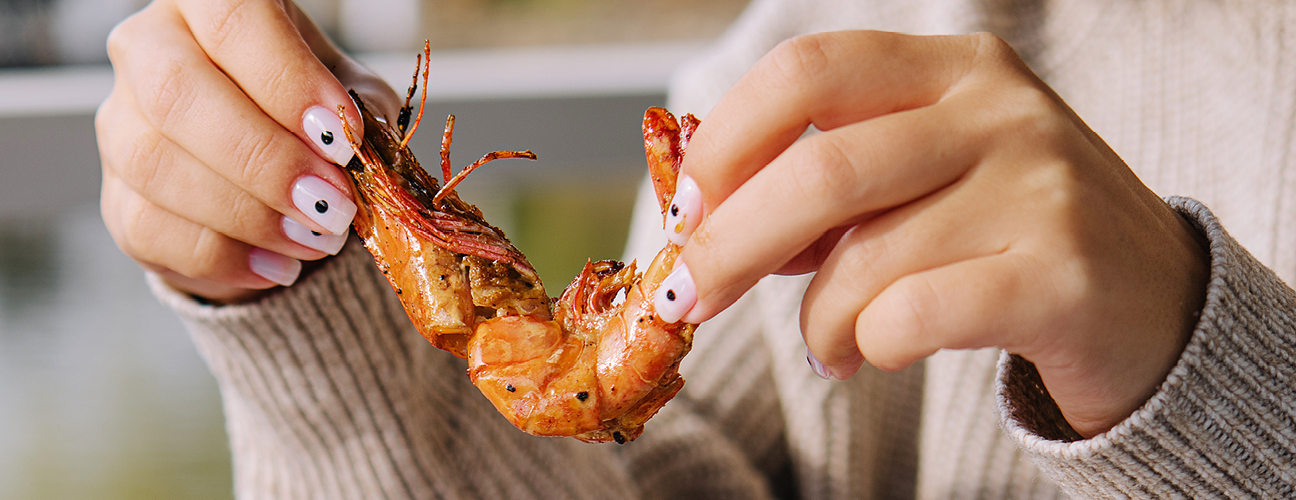All about prawns

Throwing a prawn on the barbie at Easter time? Read our guide to learn all about how to treat these delicious crustaceans with care and cook them to perfection.
Prawns have become a quintessentially Australian dish in the past few decades and feature heavily in Christmas and Easter celebrations. The abundance of a huge plate of prawns ready to eat on these special feast days is hard to beat.
A few facts about prawns
-
Australia’s favourite aquatic crustaceans grow in the tropical and temperate regions of Australia, mostly in the Northern Territory and Queensland, and grow wild or are farmed.
-
They are a good source of B group vitamins including B12 and folate, as well as being a very good source of vitamin E, an antioxidant protective against heart disease and cancer.
-
They also contain the important trace elements selenium, zinc and iodine.
-
Prawns are pink due to the presence of astaxanthin, a compound which prawns consume through the algae in their diet. Astaxanthin is also an antioxidant which benefits cardiac and skin health, as well as being protective against cancer.
-
Prawns are low in calories and fat, yet high in protein. While they contain cholesterol, they are low in saturated fat, and therefore are unlikely raise levels of LDL, the “bad” cholesterol.
-
If you are on a low-salt diet, limit your intake of prawns are they are high in sodium.
Where do our prawns come from?
At Hill Street we source our prawns from two main suppliers: Crystal Bay Farm in Cardwell, in remote North Queensland, which has been farming prawns since 1988, and Australian Seafood Selection, who provide us with wild caught prawns, also from North Queensland.
Crystal Bay Tiger Prawns, Penaeus monodon, are an extra-large prawn with a distinctive blue-brown body with tiger stripes of blue, black, yellow and white. When cooked, their meat turns white, and the stripes turn red. They are a larger prawn at 14 - 20cm in length and about 20 - 45 g each, supplied whole, cooked and frozen.
Our wild-caught prawns are Banana prawns, Fenneropenaeus indicus or Fenneropenaeus merguiensis, caught fresh, shelled, with the head off but tail on and then snap frozen while raw (known as “green”). Sold in 1kg bags containing about 30-40 prawns in each bag, they are a good size prawn suitable for all types of dishes.
Cooking prawns
Green shelled prawns (such as our wild-caught banana prawns) require a very short cooking time and are in fact not one to “throw on the barbie” – without the protection of their shell they will dry out and become tough.
Always defrost your prawns in the normal part of your fridge overnight. Shelled green prawns will need only a minute or two in a frypan or in simmering water, to cook through. They are cooked when their flesh turns white and should be taken out of the pan as soon as this colour change occurs. It’s easy to overcook them so keep an eye on the pan.
Of course, prawns that are already cooked, such as our tiger prawns from Crystal Bay, don’t need cooking but simply shelling, de-heading and removing the vein along the spine. They’re then ready for your delicious prawn cocktail or prawn salad.
For a rundown on how to keep your prawns fresh on the way home from Hill Street and until they’re ready to eat, see this guide.
And here’s some inspiration from our recipe collection:
Tequila Prawns with Pineapple Carpaccio

